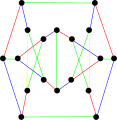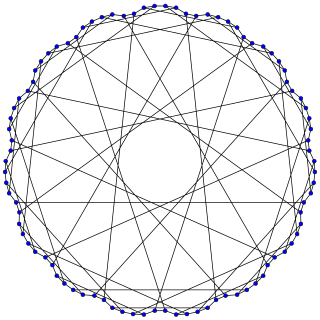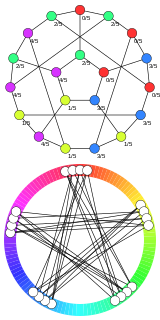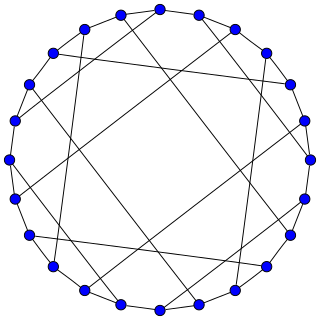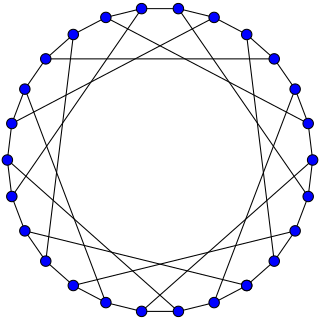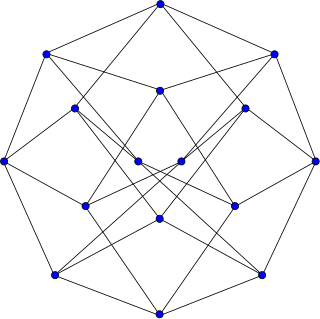| Blanuša snarks | |
|---|---|
 The first Blanuša snark | |
| Named after | Danilo Blanuša |
| Vertices | 18 (both) |
| Edges | 27 (both) |
| Radius | 4 (both) |
| Diameter | 4 (both) |
| Girth | 5 (both) |
| Automorphisms | 8, D4 (1st) 4, Klein group (2nd) |
| Chromatic number | 3 (both) |
| Chromatic index | 4 (both) |
| Book thickness | 3 (both) |
| Queue number | 2 (both) |
| Properties | Snark (both) Hypohamiltonian (both) Cubic (both) Toroidal (only one) [1] |
| Table of graphs and parameters | |
In the mathematical field of graph theory, the Blanuša snarks are two 3-regular graphs with 18 vertices and 27 edges. [2] They were discovered by Yugoslavian mathematician Danilo Blanuša in 1946 and are named after him. [3] When discovered, only one snark was known—the Petersen graph.

Mathematics includes the study of such topics as quantity, structure, space, and change.

In mathematics, graph theory is the study of graphs, which are mathematical structures used to model pairwise relations between objects. A graph in this context is made up of vertices, nodes, or points which are connected by edges, arcs, or lines. A graph may be undirected, meaning that there is no distinction between the two vertices associated with each edge, or its edges may be directed from one vertex to another; see Graph for more detailed definitions and for other variations in the types of graph that are commonly considered. Graphs are one of the prime objects of study in discrete mathematics.
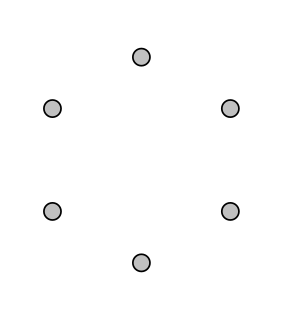
In graph theory, a regular graph is a graph where each vertex has the same number of neighbors; i.e. every vertex has the same degree or valency. A regular directed graph must also satisfy the stronger condition that the indegree and outdegree of each vertex are equal to each other. A regular graph with vertices of degree k is called a k‑regular graph or regular graph of degree k. Also, from the handshaking lemma, a regular graph of odd degree will contain an even number of vertices.
Contents
As snarks, the Blanuša snarks are connected, bridgeless cubic graphs with chromatic index equal to 4. Both of them have chromatic number 3, diameter 4 and girth 5. They are non-hamiltonian but are hypohamiltonian. [4] Both have book thickness 3 and queue number 2. [5]

In the mathematical field of graph theory, a snark is a simple, connected, bridgeless cubic graph with chromatic index equal to 4. In other words, it is a graph in which every vertex has three neighbors, the connectivity is redundant so that removing no one edge would split the graph, and the edges cannot be colored by only three colors without two edges of the same color meeting at a point. In order to avoid trivial cases, snarks are often restricted to have girth at least 5.
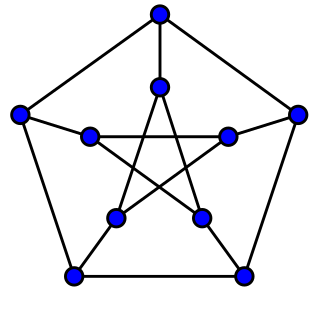
In the mathematical field of graph theory, a cubic graph is a graph in which all vertices have degree three. In other words, a cubic graph is a 3-regular graph. Cubic graphs are also called trivalent graphs.

In the mathematical field of graph theory, a graph G is said to be hypohamiltonian if G does not itself have a Hamiltonian cycle but every graph formed by removing a single vertex from G is Hamiltonian.










